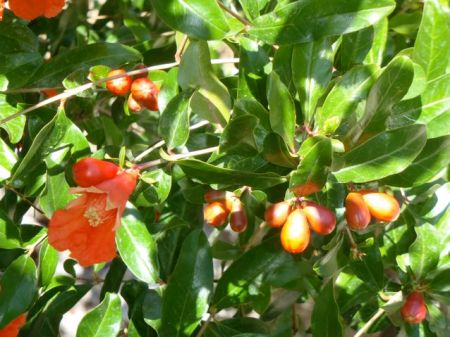*** Warning … Not for vegetarians … Warning ***
We knew when we moved here that we’d have to adjust some of our normal ways of shopping. Things that we used to consider as economical would, undoubtably, become more expensive when we moved to Cyprus and vice versa. Grocery shopping is one area where this is particularly obvious.
Were we to eat grilled pork chops, salad and jacket potatoes every night then grocery shopping would be both cheap and simple. Pork is, by far, the most economical meat to buy and is available in more cuts than are normally seen in UK supermarkets and butchers.
Did you want pork chops or fillet or lounza or souvla or souvlaki or shoulder or nondescript cubed pork or ribs or bacon or belly pork?
In contrast lamb is hardly ever seen. We once tried to buy some lamb mince (ground hamburger) from the butcher who provided our first ever Cypriot rib of beef but he wouldn’t sell it to us. No, it would be too expensive, he said. He would happily sell minced beef or pork or turkey or chicken, but not lamb. In part he was right; all of his meat is cut to order and when a customer wants mince he cuts a piece of meat from the carcass and minces it there and then. That has the advantage that the mince can be customised for the customer. Making hamburgers? Then you’ll need a cut with slightly more fat to keep the burgers moist as the cook.
With the lamb he would need to cut and weigh and price the lamb before mincing it. By the time the usable meat was removed from the bone then the relative cost would be high he explained. Rather than disagree we bought something else instead and ever since have used a mix of beef and pork in place of minced lamb.
So, plenty of pork, not so much lamb. And beef? Well there’s plenty to buy but, steaks in particular, seem be closely related to shoe-leather. Nice to look at but tough, tough, tough meat. It seems not to matter where the beef comes from as the imported French beef is just as bad as the local meat. That suggests, and those in the restaurant trade have said similar, that it is the length of time the meat is matured for that is the issue. We’ve tried to get around this a number of ways by marinading meat for great lengths of time or buying it well before it needs eating to give it a chance to mature a little extra and lose some of the toughness.
All of this has been in vain so we pretty much stopped buying steaks. There are plenty of other things we can eat so why go through this angst for a meal that won’t actually be that good despite our best efforts. The final straw was a pair of fillet steaks bought from the meat counter of a decent supermarket for a special anniversary meal. We winced at the cost: 32€/kilo and even then the meat was mediocre at best.
So, having sworn off beef steak we were in Larnaca running some errands and decided to pop into an English-run store specialising in fish, all of which is frozen before being shipped to Cyprus. We don’t eat a huge amount of fish and that’s something we’re trying to change. Actually having some fish in the freezer seems a good first step.
What we hadn’t realised was that the owner has branched out into other frozen goods. As we were nosing around the freezers for fish he mentioned in passing that he had some fillet steak which was on special offer. Did we want some before the price went up? The price was nice, very nice. The catch? This meat is intended for the restaurant trade and therefore is packaged appropriately. This wasn’t some fillet, this was an entire fillet. A little under 2kg and frozen solid.
After some debating we decided to take a risk on being able to separate it into more useable portions and bought one.

About 2kg of prime fillet steak
Half an hour with a hacksaw (and a nice new blade just for this purpose) and the fillet was cut into 6 pieces, each large enough for two respectable steaks.

One hacksaw later ...
We put five of the six meals in the freezer and allowed the final one to defrost for dinner that night. As a first test it was a simple cooking process: seasoned on all sides, seared in a griddle pan for a couple of minutes on each side, allowed to rest for 10 minutes, sliced across the grain and served over a mix of peppers, onions and mushrooms.
It was superb; the meat was tender enough to eat with a spoon.
At last steak is back on the menu. And the price? A very respectable 15€ a kilo.
There are bargains here but they often take some effort to find.































